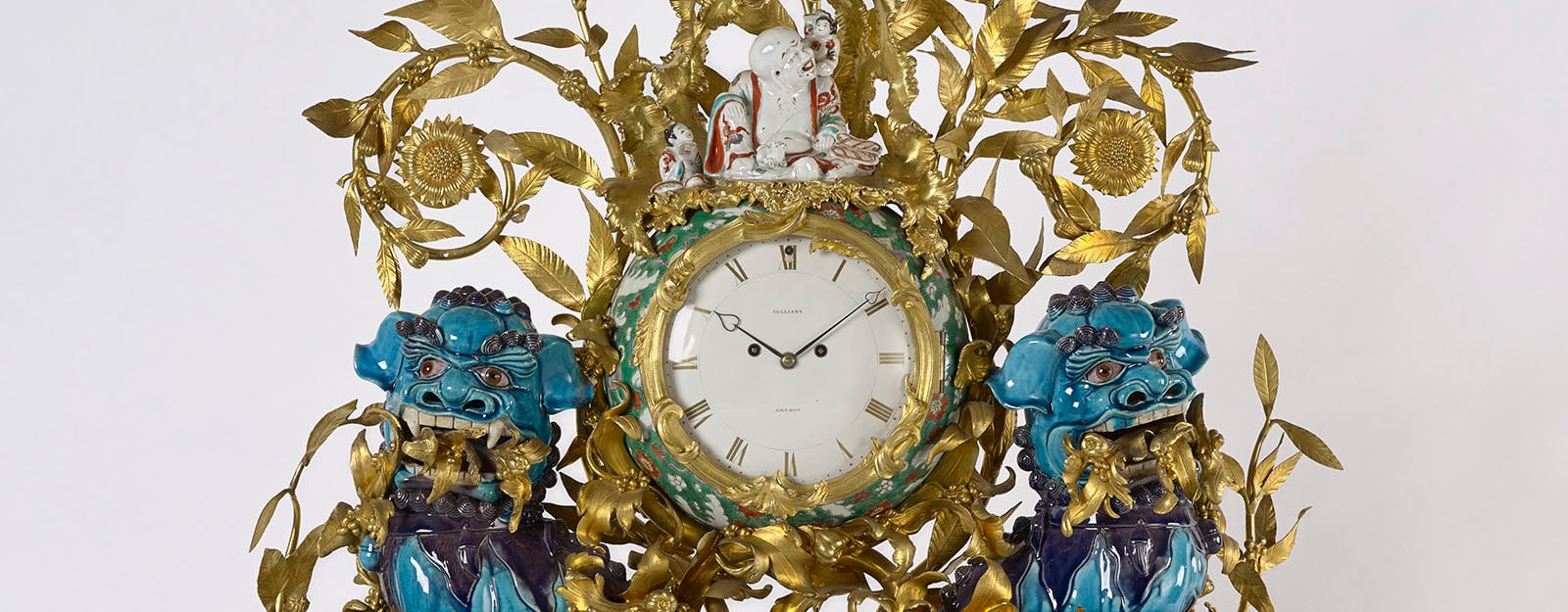
A Prince's Treasure
120 objects from the Royal Collection return to the Royal Pavilion in Brighton
Pair of vases mounted as ewers
vases: 1750-1800, mounts: early 19th centuryPorcelain with celadon glaze painted in white slip, mounted in gilt metal | 66.5 x 27.7 x 20.5 cm (whole object) | RCIN 2318
A pair of Chinese porcelain vases with French or English gilt-bronze mounts. Of broad-based baluster form, with truncated waisted neck and spreading mouth, spreading foot and glazed base. Painted in white slip with, on one side, a flowering prunus and growing peony, and on the reverse, a prunus branch; on the neck, another prunus spray. Mounted in gilt bronze, in similar style to the reign-marked vase RCIN 2379, each vase with a leaf-wrapped spout, the underside of which is cast with a mask of Pan emerging from acanthus, the opposing side of the top mount cast with a shell; the handles are formed of acanthus-wrapped crossed reeds and surmounted by a dragon, whose tail is coiled around the handle. The vase sits in a reeded foot with acanthus clasps and a pierced rockwork and pounced arched base, with three outscrolled feet.
For the furnishing of Carlton House, and subsequently the Royal Pavilion, Brighton, the Prince Regent acquired numerous celadon vases with French gilt-bronze mounts, many of which are overdecorated in white porcelain slip. Where necessary, elaborate mountings were commissioned from Vulliamy and other London craftsmen; and for Brighton, to maintain the brilliance of the galleries, they were often converted into candelabra.at the Royal Pavilion, Brighton, the pair can be seen in one window pier, beside one of the six bottle vases (RCIN 2354), in Pugin’s view of the Saloon, Brighton It may be that the mounts were added to the vases by the Hanway Street dealer in furniture and porcelain, Edward Holmes Baldock (1777–1845), who often improved porcelain by adding mounts.The mounts of these vases follow a pattern that was popular among collectors of French eighteenth-century gilt-bronze-mounted Chinese wares; the distinctive dragon embellishment is comparable to examples known to have been in eighteenth-century collections.
Text adapted from Chinese and Japanese Works of Art in the Collection of Her Majesty The Queen: Volume II.







